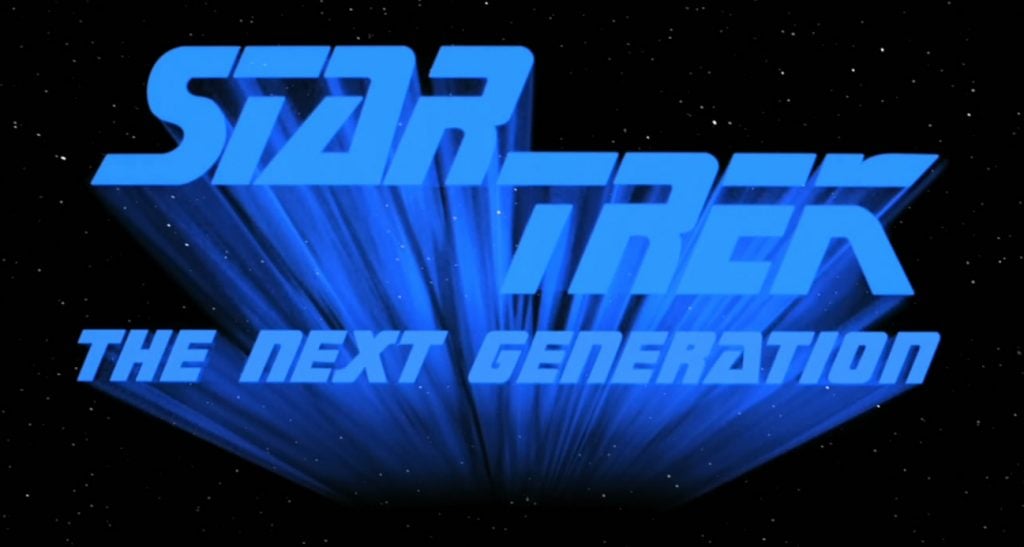
Welcome to this special Black Friday edition of ‘Final Frontier Friday’! I don’t know what makes it special, but I’ve decided that it is! And to mark the occasion, we’re returning to the first season of ‘Star Trek: The Next Generation’ to take a look back at the timeless anti-classic ‘Angel One’.
I hope my pain can at least bring you some small measure of joy.
In what is sure to become a leitmotif for this article, ‘Angel One’ had the potential to be so much more interesting than it was. While producer Herbert Wright was wary from the start of having the Enterprise crew encounter a matriarchal society (given the sci-fi and fantasy genres’ long history of “Amazon women” and other such clichés), it was quickly decided that the show would use the crew’s encounter with Angel I to weave an allegory for South African apartheid, with the society being divided along gender rather than racial lines. As the story proceeded through the customary round of rewrites, though, the sexual elements were played up (something that Wright credits at least in part to Gene Roddenberry) and the intended allegory was all but lost and we ended up with, well, ‘Angel One’.
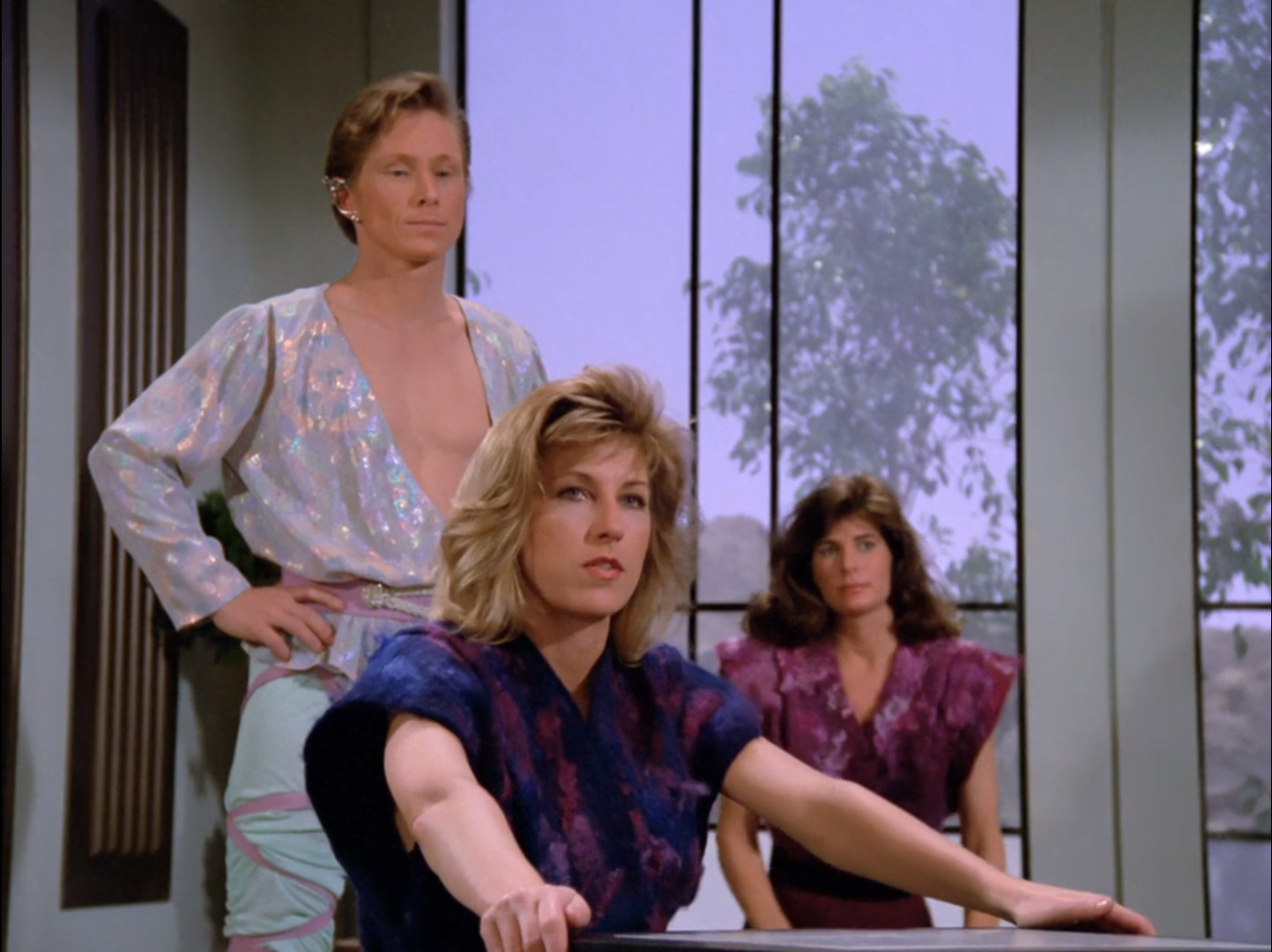
Also of interest is the off-camera threat used in a desperate attempt to add some suspense to the proceedings. In the finished episode, it’s the need for the Enterprise to support a border outpost in the midst of a standoff with a group of Romulan warships. This marked the first mention of the Romulans outside of the original series, but that very nearly wasn’t the case. In earlier drafts, the unseen foes were, perhaps unsurprisingly, the Ferengi. They were, of course, originally intended as a major antagonist for ‘The Next Generation’, but after a disastrous first showing in ‘The Last Outpost‘ and a merely adequate second appearance in ‘The Battle‘ a few weeks later, the producers quickly backed away from those plans, ultimately leaving the Ferengi on the bench for most of the next two years, after which they began a process of re-envisioning them that wouldn’t truly pay dividends until the launch of ‘Deep Space Nine’.
As for the show itself, it begins with the Enterprise discovering the wreckage of the Odin, a ship lost several years earlier. Though there are no survivors aboard the wrecked ship, a number of missing escape pods lead the crew to search the nearest M-class planet. That world is Angel I, a planet ruled by a matriarchal society with which the Federation has had no contact for decades. Upon arrival, Troi contacts Angel I’s leader, Mistress Beata, who agrees to allow an away team to beam down.
The away team, consisting of Troi, Data, Riker, and Yar beams down to meet with Beata and her council. None of the council members are particularly cooperative, and Beata has a male servant lead the Starfleet crew to another room. Troi takes Beata’s refusal to confirm the presence of survivors as confirmation in its own right, and Trent (the servant) eventually arrives to escort them back to the council chamber. Once there, Beata admits that there were four survivors from the Odin, lead by a man named Ramsey. She claims they abused Angel I’s hospitality and started causing trouble, becoming fugitives as a result. Meanwhile, the Enterprise receives word that a Federation border outpost is being threatened by a group of Romulan battlecruisers.
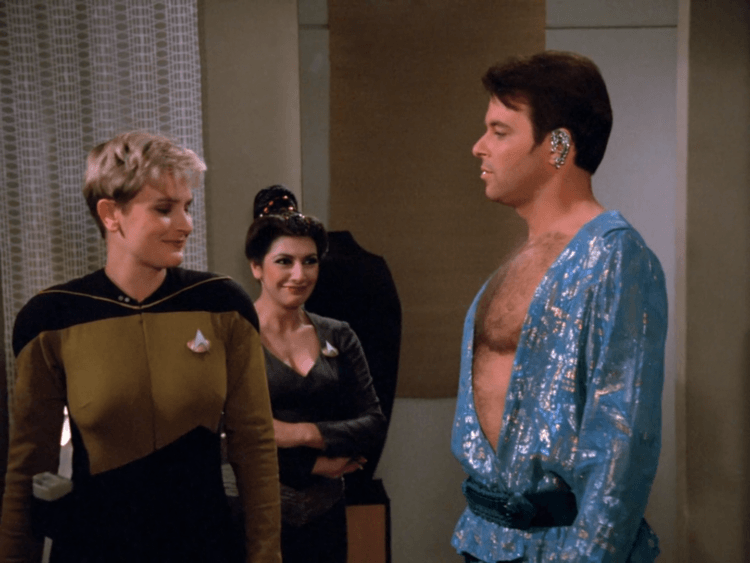
As if all that wasn’t enough, Wesley Crusher and his friends have come down with a nasty alien flu that soon spreads like wildfire through the ship. Data suggests that they search for Ramsey and the other survivors by scanning for platinum, which is not normally found on Angel I. As the search gets underway, Riker decides (much to Troi and Yar’s amusement) to try to ingratiate himself to Beata by donning the customary tight pants and revealing, billowy shirts favored by the local men. Back on the ship, Picard falls ill and Crusher orders him to bed rest, leaving La Forge in command. Later, Riker informs Beata that the Enterprise has located the survivors. Riker remains with Beata while Yar, Troi, and Data beam to the survivors’ location, where they are greeted by Ramsey who says he’s been expecting them.
Yar tells Ramsey that they are here to bring him and his comrades home, but to the surprise of the Starfleet team, Ramsey balks. He tells them that as far as the Odin survivors are concerned, Angel I is their home. Since they were stranded there, they’ve married, and some have even had children. Meanwhile, Riker spends the evening… ingratiating himself to Beata, who continues to describe Ramsey and his fellows as anarchists, outlaws, and all-around bad hombres.
What does that mean, exactly? Well, as Ramsey explains to Data, while the Odin survivors were at first enamored of life on Angel I, they quickly became disillusioned as they saw how men are discriminated against. They spoke out and ultimately became fugitives as a result. Acknowledging that they can’t force Ramsey and the others to leave, the Starfleet crew beams away. After they do, we learn how Ramsey knew to expect them: his wife is Ariel, one of the women who sits on the ruling council with Beata. Upon returning, Yar brings Riker up to speed and Beata declares that she has no choice but to sentence the Odin survivors to death.
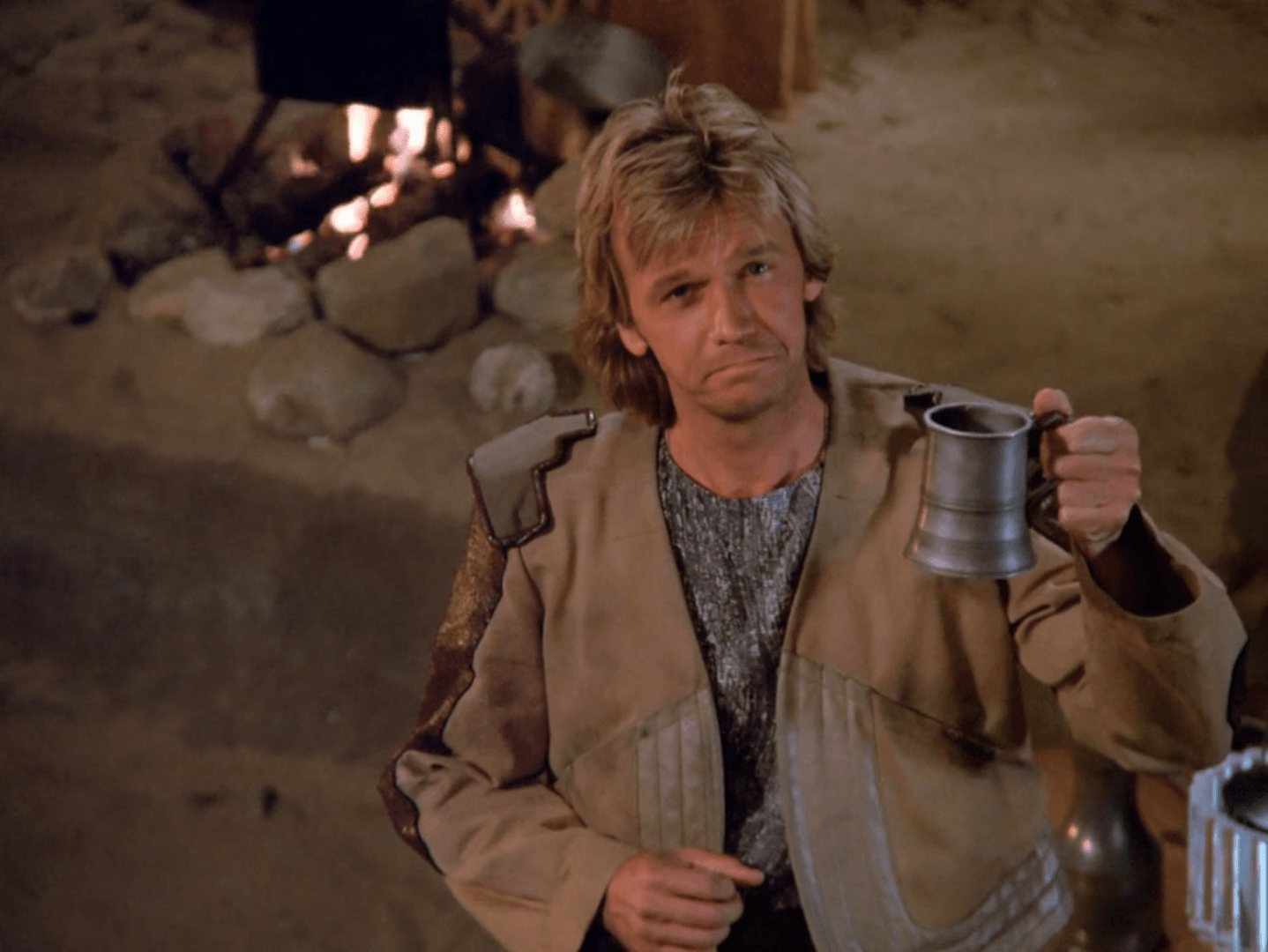
On the Enterprise, Crusher has an epiphany regarding the virus. On the surface, Data relays a message: the Berlin has arrived at the border outpost, but the Enterprise is still needed as her presence would be a significant show of strength in any dealings with the Romulans. Beata manages to round up Ramsey and the others, having had Ariel followed. She tells an indignant Riker that the survivors will be executed in the morning, though she does allow him another chance to convince Ramsey to leave with the Enterprise. Ramsey, of course, refuses. Riker is ready to defy regulations and just beam everyone up, but Crusher refuses to allow anyone aboard because of the virus. Riker then sends Data back to the ship and tells him to get the Enterprise to the Neutral Zone before it’s too late.
The next morning, the away team is invited to attend the execution. Riker agrees, but only after Data informs him that he still has forty-seven minutes before the Enterprise has to leave for the Neutral Zone. At the execution, Riker makes a grand speech about revolution and social evolution. Just then, Crusher reports that she’s found a treatment, allowing the away team to return to the ship. Beata tells Riker that she has decided to call off the execution and will instead exile Ramsey and the others to a remote and inhospitable part of the planet. It’ll be rough going, but she believes they’ll be able to build lives there. Satisfied, the away team returns to the Enterprise as the rest of the crew begins to recover and the ship heads for the Neutral Zone.
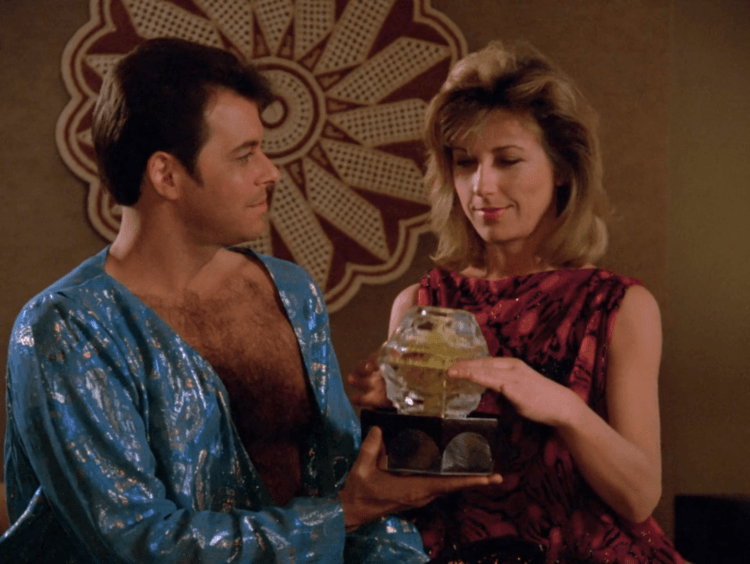
Well, this is a Season One episode, so I’m sure it won’t surprise you that it’s an absolute low point of the series and arguably for the franchise as a whole. While it’s not as viscerally repulsive as some early ‘TNG’ installments (more on that later) it has nonetheless earned its place on more than a few “Worst of ‘TNG'” lists, where it’s often shorthanded as “the shitty sexist one.” But the thing about a column like this is that as tempting as it is, I can’t just say “It sucks. NEXT!” I mean, I could, but I don’t think my editor would like it. And besides, you guys expect better (or at least wordier) from me by now.
But what, then, is there to say about an episode that fandom rightly wrote off as “the shitty sexist one” thirty years ago? Well, sometimes it helps not to look at these shows in isolation but rather as part of a larger context. In this case, that context is the first season of ‘TNG’, and that context is not kind. ‘Angel One’ is an episode in which nearly all the cliches that dogged this show in its first year are on full display. The only thing missed is Wesley saving the ship, but since he endangered it in the first place (being the first to come down with that damn space flu), we’ll let him off the hook this time.
More specifically, the fact that ‘Angel One’ is “the shitty sexist one” means it also begs comparison to ‘Code of Honor’, which I’m sure you’ll remember as “the shitty racist one.” And the thing is that unlike ‘Code of Honor’, this one at least had its heart in the right place. As I mentioned earlier, the episode was originally meant to use sexism as an allegory for apartheid. It is, if nothing else, a novel approach to the subject that ultimately didn’t pan out onscreen. Unfortunately, what we got instead was an episode that – at best – offers a fairly rote critique of sexism by reversing the usual power dynamic. Add to that the shipboard virus plot, which is incredibly obvious filler (and boring filler on top of that) and you have an episode that reveals its fundamental failures well before the midway point. Put simply, it starts with a (potentially) interesting premise but can’t even squeeze a full episode’s worth of story out of it.
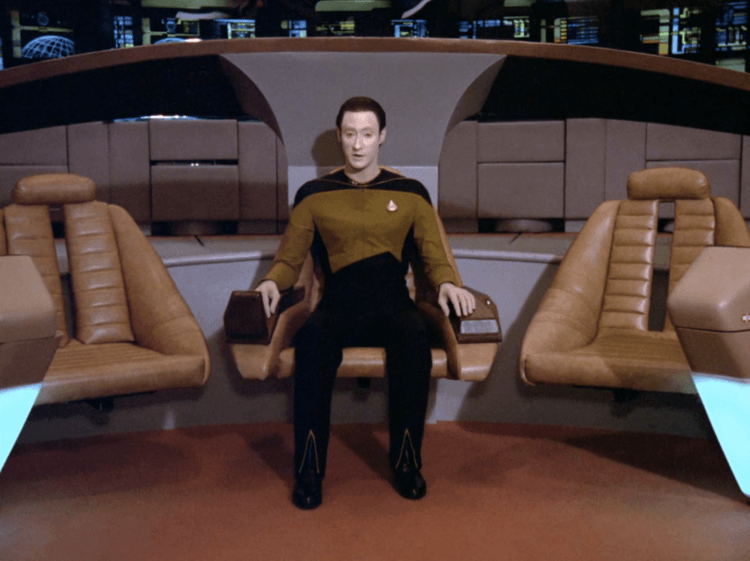
But there is something about ‘Angel One’ that manages to be interesting, and once again it comes back to context. In his own review of the episode, Wil Wheaton described ‘Angel One’ as being evocative of “a script from the 1960s that was barely retooled.” In doing so, he inadvertently highlighted a trend that emerged over the first half of the first season, namely that the worst episodes are those that feel the most like original series episodes. It’s a list that includes such duds as ‘Angel One’, ‘Code of Honor’, and ‘The Naked Now’.
On the one hand, it makes sense that you’d produce episodes with an original series feel upon launching a spinoff. I mean, that’s just how the majority of ‘Star Trek’ had been written at the time. And of course, you would – as Roddenberry did – want to bring in as much original series talent as you could (a list that includes writers D.C. Fontana and David Gerrold, producer Robert Justman, and costume designer William Ware Theiss). But even at this early stage, ‘TNG’ has the makings of a very different show from the original ‘Star Trek’. What works for one wouldn’t necessarily work for the other (and episodes like this wouldn’t work on either). It speaks to a lot of the issues that ‘TNG’ had at the time, but more than anything else it underscores the fact that even after half a season the show still hadn’t figured out its own identity.
And finally, speaking of original series talent, can we take a moment to appreciate the, um, native garb that Riker wears? It’s a very Theiss costume, calling to mind a gender-flipped version of the gravity-defying costumes (think Denise Crosby in ‘The Naked Now’ or Leslie Parrish in ‘Who Mourns for Adonais?’) that made the man famous. Yes, it looks silly, but it’s supposed to. And frankly, the fact that those scenes work at all is a testament to Jonathan Frakes, who against all odds manages to walk on camera in that ludicrous garment and own it.
What did you think of ‘Angel One’? Let me know in the comments, and be sure to check back in two weeks for the next ‘Final Frontier Friday’!
